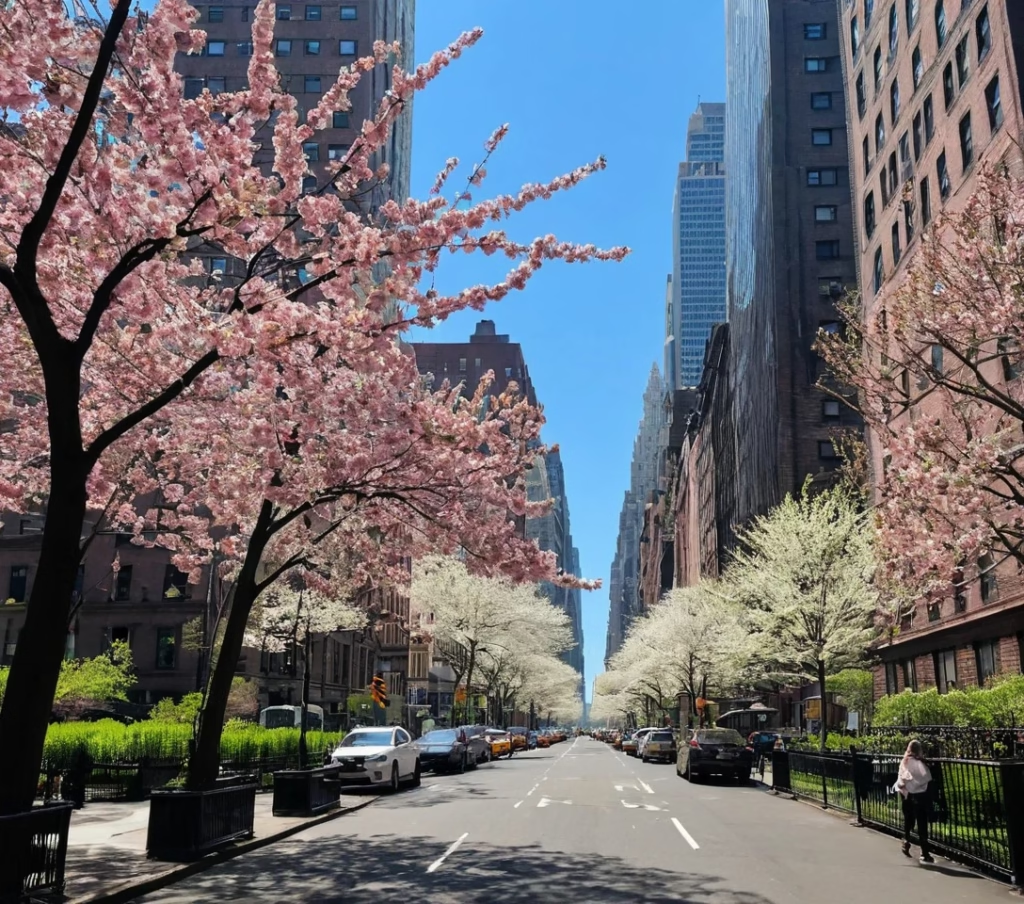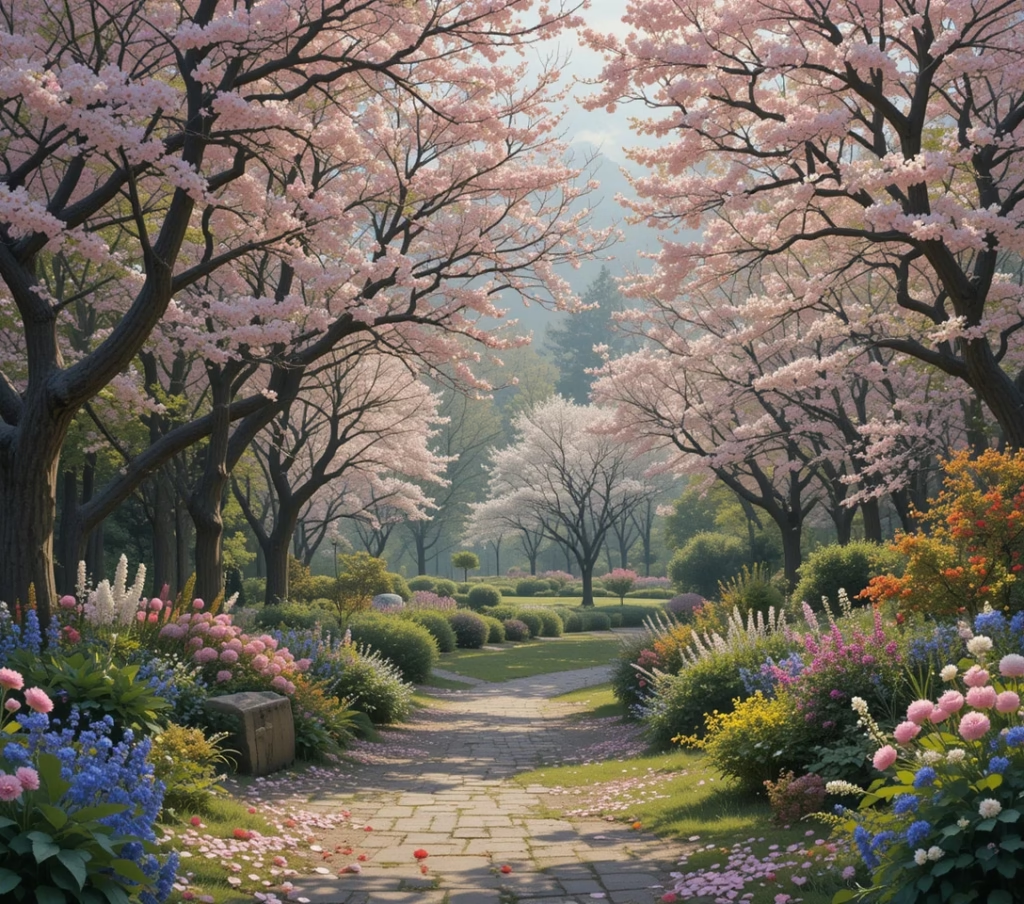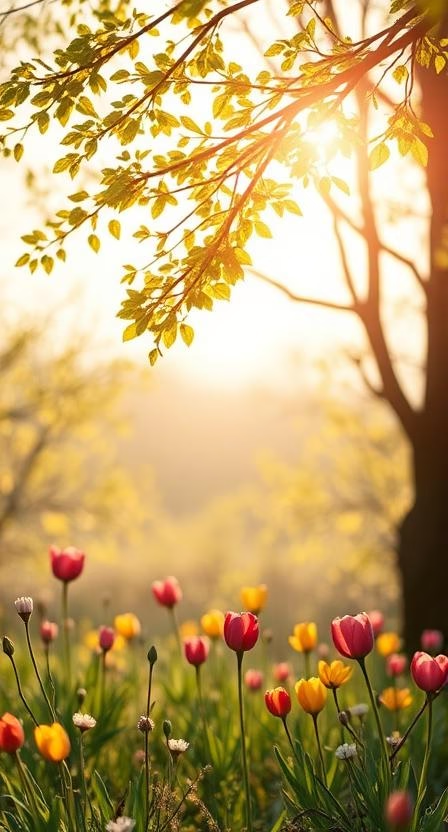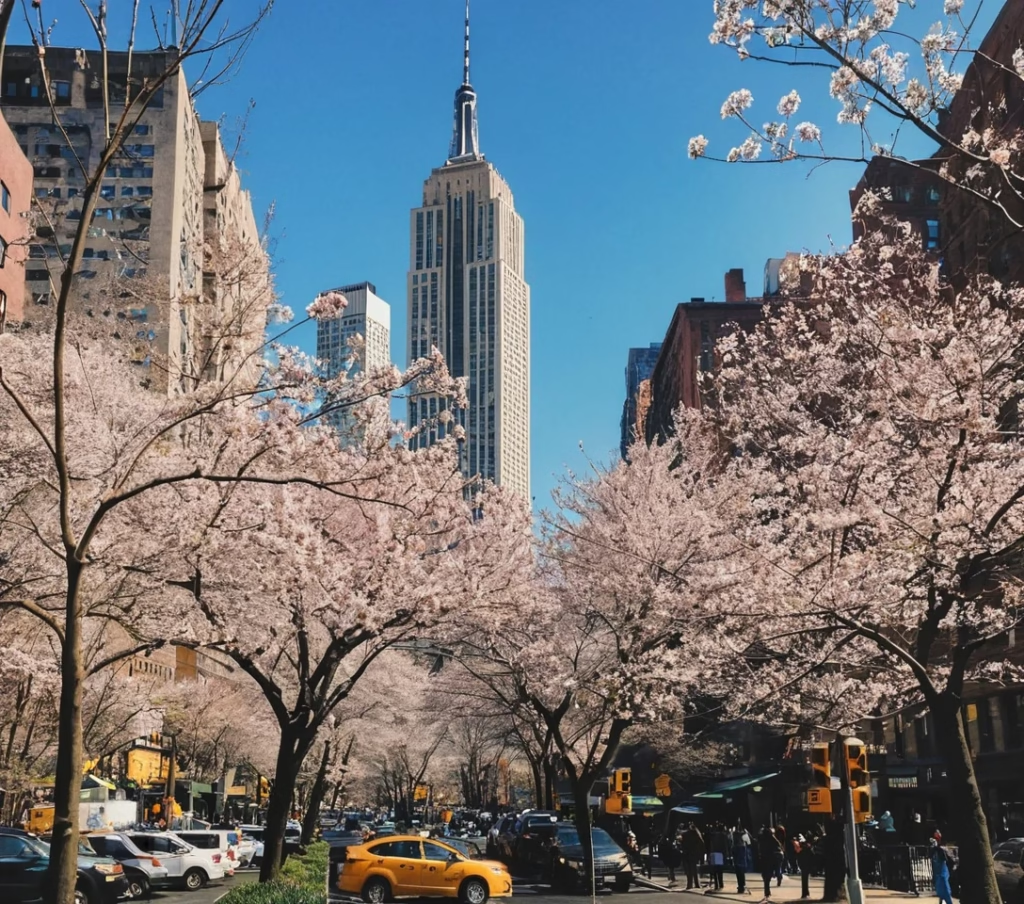
Spring is a season that transcends mere weather changes; it is a sensory experience, a visual feast, and a poetic reminder of life’s cyclical nature. The aesthetic of spring is a harmonious blend of colors, textures, and emotions that evoke feelings of renewal, hope, and joy. From the first bloom of a cherry blossom to the gentle rustle of leaves in the breeze, spring is a time when the world awakens from its winter slumber and bursts into vibrant life. This 1425-word exploration delves into the multifaceted aesthetic of spring, celebrating its beauty and the profound impact it has on our senses and spirits.
The Palette of Spring: A Symphony of Colors
One of the most striking aspects of spring’s aesthetic is its color palette. After the monochrome tones of winter, spring introduces a kaleidoscope of hues that seem almost surreal in their brilliance. The soft pastels of cherry blossoms, the vivid yellows of daffodils, the rich purples of lilacs, and the fresh greens of new leaves create a visual symphony that is both soothing and invigorating.
The color green, in particular, dominates the spring landscape. It is the color of renewal, symbolizing growth and vitality. From the first tender shoots of grass to the lush canopies of trees, green is a constant reminder of nature’s resilience. The varying shades of green—emerald, lime, sage, and moss—create a layered effect that adds depth and dimension to the scenery.
Pastel colors also play a significant role in spring’s aesthetic. These soft, muted tones evoke a sense of calm and serenity, contrasting beautifully with the boldness of summer colors. The delicate pinks, lavenders, and blues of spring flowers create a dreamlike quality, as if the world has been dipped in watercolor. This pastel palette is often associated with innocence and new beginnings, making it a fitting representation of the season.
The Texture of Spring: A Tactile Wonderland

Spring’s aesthetic is not just visual; it is also deeply tactile. The season invites us to touch, feel, and connect with the natural world in a way that is both grounding and exhilarating. The velvety petals of a rose, the rough bark of a tree, the cool smoothness of a pebble in a stream—each texture tells a story and adds to the richness of the spring experience.
One of the most iconic textures of spring is the softness of flower petals. Whether it’s the silky smoothness of a tulip or the delicate fuzz of a peach blossom, these textures invite us to pause and appreciate the intricate details of nature. The contrast between the softness of petals and the sturdy stems that support them is a reminder of the delicate balance that exists in the natural world.
The texture of spring is also evident in the changing landscape. The once-hard, frozen ground softens and becomes malleable, allowing new life to emerge. The feel of fresh soil between your fingers, the crunch of new grass underfoot, and the coolness of morning dew on your skin are all tactile reminders of the season’s transformative power.
The Scent of Spring: A Fragrant Awakening
Spring’s aesthetic is not limited to what we see and touch; it is also deeply olfactory. The season is characterized by a symphony of scents that awaken the senses and evoke memories of springs past. The sweet fragrance of blooming flowers, the earthy aroma of rain-soaked soil, and the fresh, clean scent of new leaves all contribute to the season’s unique olfactory profile.
One of the most iconic scents of spring is that of blooming flowers. Each flower has its own distinct fragrance, from the heady sweetness of lilacs to the subtle, citrusy scent of magnolias. These fragrances are not just pleasant; they are also deeply evocative, often triggering memories and emotions. The scent of a particular flower can transport us back to a specific moment in time, making spring a season of nostalgia as well as renewal.
The scent of rain is another defining characteristic of spring. After the dry, cold months of winter, the first spring rains bring with them a fresh, clean aroma that is both invigorating and soothing. This scent, known as petrichor, is caused by the release of oils from the soil and the activation of certain bacteria. It is a scent that is universally loved and deeply associated with the renewal that spring brings.
The Sound of Spring: A Melodic Landscape

Spring’s aesthetic is also auditory. The season is filled with a symphony of sounds that create a melodic landscape, from the cheerful chirping of birds to the gentle rustling of leaves in the breeze. These sounds are not just background noise; they are an integral part of the season’s aesthetic, adding depth and dimension to the experience of spring.
One of the most iconic sounds of spring is the song of birds. After the quiet of winter, the return of birdsong is a welcome reminder of the season’s vitality. Each bird has its own unique song, from the melodious trill of a robin to the rhythmic cooing of a dove. These songs are not just beautiful to listen to; they are also a sign of the season’s abundance, as birds return to build nests and raise their young.
The sound of water is another important element of spring’s auditory landscape. The gentle babbling of a brook, the rhythmic patter of rain, and the soft lapping of waves on a lakeshore all contribute to the season’s soothing soundscape. These sounds are deeply calming and meditative, inviting us to slow down and appreciate the beauty of the moment.
The Emotional Aesthetic of Spring: A Time of Renewal and Hope

Beyond its sensory appeal, spring’s aesthetic is also deeply emotional. The season is often associated with themes of renewal, hope, and new beginnings. After the long, dark months of winter, spring offers a sense of relief and optimism, reminding us that life is cyclical and that better days are always ahead.
The emotional aesthetic of spring is closely tied to its visual and sensory elements. The sight of new growth, the scent of blooming flowers, and the sound of birdsong all contribute to a sense of hope and possibility. Spring is a time when we feel inspired to make changes in our own lives, whether it’s starting a new project, adopting a healthier lifestyle, or simply taking the time to appreciate the beauty around us.
Spring is also a season of connection. As the weather warms and the days grow longer, we are drawn outdoors to reconnect with nature and with each other. The season’s aesthetic encourages us to slow down, to take notice of the world around us, and to appreciate the simple pleasures of life. Whether it’s a picnic in the park, a walk through a blooming garden, or a quiet moment spent watching the sunset, spring invites us to be present and to savor the moment.
The Cultural Aesthetic of Spring: A Time of Celebration
Spring’s aesthetic has also been celebrated in art, literature, and culture for centuries. From the delicate cherry blossoms of Japanese hanami to the vibrant colors of Holi, the season has inspired countless traditions and rituals that celebrate its beauty and significance.
In art, spring has been a popular subject for centuries, with artists capturing its beauty in a variety of mediums. From the lush landscapes of the Impressionists to the delicate floral still lifes of the Dutch masters, spring has been a source of inspiration for artists around the world. The season’s aesthetic is often used to symbolize themes of renewal, hope, and the passage of time.

In literature, spring is often used as a metaphor for new beginnings and the triumph of life over death. From Shakespeare’s sonnets to the poetry of Wordsworth, the season has been celebrated for its beauty and its ability to inspire hope and optimism. Spring is also a popular setting for stories of love and romance, with its blooming flowers and warm weather providing the perfect backdrop for tales of passion and desire.
In culture, spring is a time of celebration and renewal. Many cultures around the world have festivals and rituals that celebrate the season’s arrival, from the colorful festivities of Holi in India to the ancient traditions of May Day in Europe. These celebrations often involve music, dance, and the wearing of bright, colorful clothing, reflecting the season’s vibrant aesthetic.
Juices and Cocktails: A Refreshing Touch to Spring Aesthetic

Spring is not only a feast for the eyes but also a delight for the palate, and what better way to celebrate the season than with fresh, vibrant juices and cocktails? The aesthetic of spring extends to the drinks we enjoy, with their bright colors, light textures, and refreshing flavors mirroring the season’s essence. Freshly squeezed citrus juices, like orange or grapefruit, embody the zest and energy of spring, while floral-infused cocktails, such as lavender gin fizz or elderflower spritz, capture the delicate beauty of blooming flowers. Herbal touches like mint or basil add a crisp, invigorating note, perfect for sipping on a sunny afternoon. Whether it’s a colorful fruit punch at a garden party or a sophisticated cocktail garnished with edible flowers, spring-inspired beverages bring a touch of elegance and joy to any gathering, making them an essential part of the season’s sensory experience.
Conclusion: The Timeless Beauty of Spring
Spring’s aesthetic is a timeless and universal source of beauty and inspiration. Its vibrant colors, soothing textures, evocative scents, and melodic sounds create a sensory experience that is both uplifting and grounding. Beyond its sensory appeal, spring’s aesthetic is also deeply emotional, evoking feelings of hope, renewal, and connection.
As we move through the season, let us take the time to appreciate the beauty of spring in all its forms. Whether it’s the sight of a blooming flower, the scent of fresh rain, or the sound of birdsong, these small moments of beauty remind us of the wonder and magic of the natural world. Spring is a season of renewal, a time to let go of the past and embrace the possibilities of the future. In its aesthetic, we find not just beauty, but also a profound sense of hope and optimism for the days ahead.

